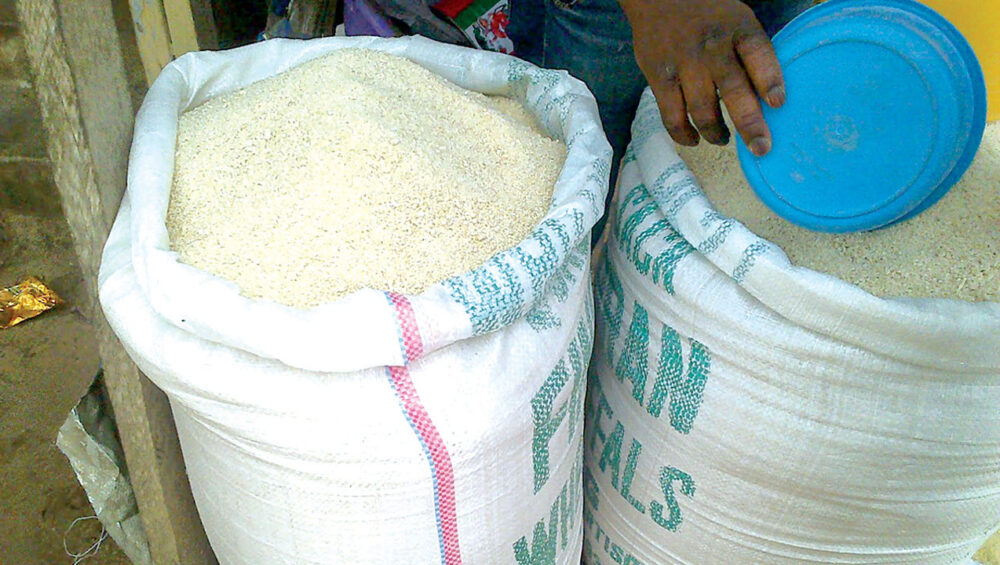In the world of culinary delights and nutritional treasures, one often stumbles upon hidden gems that not only tantalize the taste buds but also offer a plethora of health benefits. Garri, a popular West African food staple made from fermented cassava, is one such culinary wonder. In this comprehensive guide, we will delve into the myriad health benefits of Garri that make it a must-add to your dietary regimen.
What is Garri?
Before we dive into its health benefits, let’s start with the basics. Garri is a traditional West African food product that has been consumed for centuries. It is made from cassava, a starchy tuberous root that is widely grown and enjoyed across Africa. The process of making Garri involves peeling, washing, and fermenting cassava roots, followed by a thorough drying process. The result is a coarse, granular flour that is rich in carbohydrates and has a slightly sour taste due to the fermentation.
Nutritional Profile
Garri is nutritionally dense, packing a range of essential nutrients into its unassuming appearance. Let’s break down its nutritional profile:
- Carbohydrates
Garri is predominantly composed of carbohydrates, making it an excellent source of energy. Carbohydrates are the body’s primary fuel, providing the necessary energy for day-to-day activities. - Fiber
Fiber is an essential component of a healthy diet, aiding in digestion and promoting a feeling of fullness. Garri contains a notable amount of dietary fiber, which can contribute to improved digestive health. - Vitamins
Garri contains essential vitamins, including vitamin C, which plays a crucial role in maintaining a healthy immune system. Additionally, it contains B vitamins like thiamine (B1), riboflavin (B2), and niacin (B3) that are essential for overall well-being. - Minerals
This cassava-derived delight also boasts an array of minerals such as potassium, magnesium, and calcium, which are vital for maintaining healthy bones, muscles, and nerve function.
Health Benefits of Garri
Now that we’ve explored the nutritional content of Garri, let’s delve into its remarkable health benefits:
- Energy Boost
Due to its high carbohydrate content, Garri is an excellent source of quick energy. It’s a favorite among athletes and individuals with active lifestyles who need an energy boost before or after physical activities. - Digestive Health
The fiber in Garri aids in digestion by promoting regular bowel movements and preventing constipation. It also supports a healthy gut microbiome, which is essential for overall well-being. - Immune System Support
The presence of vitamin C in Garri contributes to a strengthened immune system. Regular consumption can help ward off illnesses and infections. - Nutrient Absorption
Garri’s combination of vitamins and minerals enhances the body’s ability to absorb nutrients from other foods, making it a valuable addition to a balanced diet. - Weight Management
The fiber content in Garri contributes to a feeling of fullness, which can help control appetite and support weight management efforts. - Bone Health
The presence of minerals like calcium and magnesium is beneficial for maintaining strong and healthy bones. This is particularly important as we age and bone health becomes a concern.
Culinary Versatility
Beyond its nutritional and health benefits, Garri’s culinary versatility is worth noting. It can be enjoyed in various forms, such as:
- Eba: A popular dish made by mixing Garri with hot water to form a dough-like consistency, often served with soups and stews.
- Garri and Groundnut: A simple yet delightful snack where Garri is paired with groundnuts (peanuts), providing a satisfying combination of textures and flavors.
- Garri and Sugar: For those with a sweet tooth, Garri can be mixed with sugar and milk, creating a delicious and energizing snack.
- Garri as a Thickener: Garri’s granular texture makes it an excellent natural thickener for soups and sauces.





